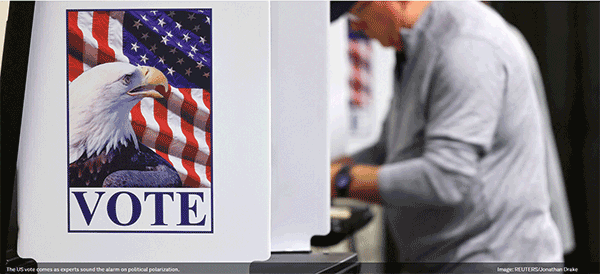Understanding the 2024 U.S. Presidential Election and Its Global Implications
The 2024 U.S. presidential election, scheduled for November 5, has captured global attention. With tens of millions of Americans heading to the polls, the outcome could have profound effects on the global economy, climate policy, and international relations. Here’s an overview of how U.S. presidential elections work and what’s at stake.
How the U.S. Elects Its President
U.S. presidential elections occur every four years, following a primary process in which the two major political parties—Democratic and Republican—select their candidates through state caucuses and primaries. This year, former President Donald Trump is the Republican nominee, while current Vice President Kamala Harris is representing the Democratic Party after President Joe Biden chose not to seek re-election.
After months of campaigning, candidates encourage voters to vote early or on election day, November 5, 2024. This election date was set in 1845 by Congress, ensuring that elections fall on “the Tuesday after the first Monday in November.” This timing originally accommodated the agrarian lifestyle of 19th-century America, allowing citizens to vote after harvest and before winter.
In the modern era, Americans must register to vote in their home state. They can cast their ballots in person on election day, vote early, or use absentee ballots.
The Electoral College Explained
The U.S. presidential election isn’t decided by a direct popular vote but rather by the Electoral College system. Each state is allocated electoral votes based on its number of representatives in Congress. States like California have a high number of electoral votes (54), while states like Wyoming have only three. In total, there are 538 electoral votes, and a candidate needs 270 to win the presidency.
When voters cast their ballots, they are voting for a slate of electors who have pledged to support their chosen candidate. Most states follow a “winner-takes-all” system, where the candidate who wins the popular vote in the state receives all its electoral votes. However, Maine and Nebraska use a proportional system.
Once all the votes are counted, state electors will meet in their respective capitals to formally cast their votes for president and vice president. The final results are then certified in January during a joint session of Congress, with the new president taking office on January 20, 2025.
The Electoral College system has sparked debate, as it allows for scenarios where a candidate wins the presidency without winning the national popular vote, as happened in 2000 and 2016.
The Significance of Voter Turnout and Societal Polarization
Voter turnout has surged in recent U.S. elections. In 2020, over 158 million Americans voted, equating to 65.9% of the voting-age population—a rise from 59.2% in 2016. High turnout reflects both increased civic engagement and heightened polarization across the U.S.
The 2024 election occurs in a year filled with global elections, with over 2 billion people across 50 countries heading to the polls. This wave of democratic engagement coincides with growing ideological and cultural divisions, particularly in the U.S., where societal polarization has deepened. The World Economic Forum’s 2024 Global Risks Report highlights this trend, noting that polarization ranks among the top three short-term risks worldwide, due to its potential to destabilize societies, disrupt economies, and paralyze decision-making.
As Americans prepare to vote, this year’s election will not only shape U.S. policies but could also influence global stability, international relations, and economic trends for years to come.
This article was rewritten by JournosNews.com based on verified reporting from trusted sources. The content has been independently reviewed, fact-checked, and edited for accuracy, neutrality, tone, and global readability in accordance with Google News and AdSense standards.
All opinions, quotes, or statements from contributors, experts, or sourced organizations do not necessarily reflect the views of JournosNews.com. JournosNews.com maintains full editorial independence from any external funders, sponsors, or organizations.
Stay informed with JournosNews.com — your trusted source for verified global reporting and in-depth analysis. Follow us on Google News, BlueSky, and X for real-time updates.














